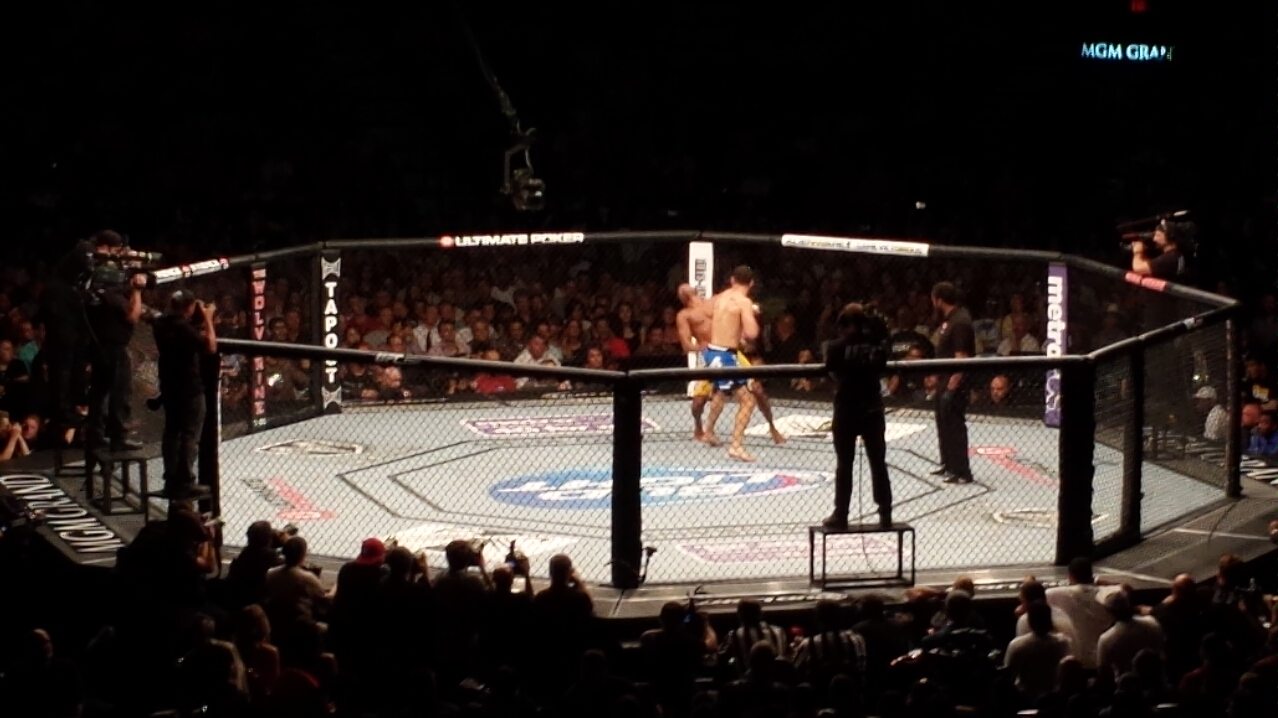Have you seen a fight recently? If you have, there’s an excellent chance it was an Ultimate Fighting Championship event, and not boxing.
The UFC makes for great odds and endless action for sports betting, so it’s easy to see why it is so popular. However, how has it gotten to where it is today? This post will chronicle the rise of the UFC, from being a supposed one-off fighting tournament on PPV, to the sports juggernaut it is in the present…
The early days
Billed in its infancy as a “war of the worlds” of marital arts by founding fathers Art Davie and Rorion Gracie, The Ultimate Fighting Championship (as it was known then) started out as an (almost) no-holds barred tournament of fighters from around the globe.
Any and all fighting styles were welcome, and very little was restricted within the confines of the Octagon (save for biting and eye gouging). There were no weight classes, and fights were decided solely by submission or TKO.
The initial pay per view did extremely well for such a new concept, drawing in over 86,000 buys in 1993. The creation of a sport was never Art’s and Rorion’s intent, but the novel concept of clashing styles and the brutality of combat had sports fans hooked, and pleading for more.
Government-led backlash leads to the adoption of rules
With public awareness slowly building of this exciting but incredibly violent sport, it was only a matter of time before people, citizen’s groups and politicians opposed to the latter development took notice. In 1999, Senator John McCain petitioned all 50 states to ban the UFC from competing in their jurisdictions; 36 complied with his wishes, putting the popular but fledgling sport in a bind.
Though there was a great deal of resistance to it, rules that would get the Ultimate Fighting Championship back on the bill throughout the USA began to emerge. Fish-hooking was banned, as was kicking the head of downed fighters, among other reforms.
Dana White joins with the Fertittas to buy the UFC
While they had gotten back on the map throughout most of the country in the year 2000, the economic damage done had them teetering on the edge of bankruptcy. Recognizing the value of the UFC brand, casino magnates Frank and Lorenzo Fertitta joined with business partner Dana White swept to purchase the company. With tie-ins to the Nevada State Athletic Commission, and plenty of advertising and marketing muscle at their disposal, they revived a sport on the edge of collapse, helping it resume its upward trajectory.
A reality TV show began the upward ascent of UFC to where it is today
For all their efforts up to 2005 though, growth remained stubbornly linear. At this time, reality TV shows were a hot trend that was shifting viewers away from sitcoms and toward shows based on the lives of real people. Lorenzo and Frank began to put together a show that would take advantage of this sea change in TV viewing habits, and later that year, the first season of The Ultimate Fighter aired on Spike TV.
Casual fans came to know the combatants, who were fighting for a six-figure contract to star in the UFC, as human beings, and not just as mere pugilists. Viewership numbers of PPV’s from that point on began to hockey stick, going from 300,000 buys in 2005, to 1.7 million for UFC 100 in 2009.




